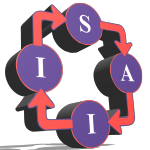 A scientific paper entitled “Adaptive Edge and Fog Computing Paradigm for Wide Area Video and Audio Surveillance” has been edited by UBITECH and is presented at the Intelligent Systems and Services for Cloud Accessible, Data-intensive Computing (ISS-Cloud) Workshop that takes place as part of the 9th International Conference on Information, Intelligence, Systems and Applications (IISA 2018), hosted between 23 – 25 July, 2018 in Zakynthos, Greece. In this paper, UBITECH describes a novel, adaptive architecture and that builds on top of a distributed computing paradigm and is ideal for smart surveillance systems that can utilize resources at Cloud, Fog and Edge, documenting the main architectural components, the hardware options and key software components of the system – incorporating Cloud, Edge and Fog Computing concepts and artifacts. Edge Computing is realized by a camera embedded system, Cloud Computing with the usage of public accessible infrastructure for data processing and Fog Computing for the processing and data fusion of video streams in small areas.
A scientific paper entitled “Adaptive Edge and Fog Computing Paradigm for Wide Area Video and Audio Surveillance” has been edited by UBITECH and is presented at the Intelligent Systems and Services for Cloud Accessible, Data-intensive Computing (ISS-Cloud) Workshop that takes place as part of the 9th International Conference on Information, Intelligence, Systems and Applications (IISA 2018), hosted between 23 – 25 July, 2018 in Zakynthos, Greece. In this paper, UBITECH describes a novel, adaptive architecture and that builds on top of a distributed computing paradigm and is ideal for smart surveillance systems that can utilize resources at Cloud, Fog and Edge, documenting the main architectural components, the hardware options and key software components of the system – incorporating Cloud, Edge and Fog Computing concepts and artifacts. Edge Computing is realized by a camera embedded system, Cloud Computing with the usage of public accessible infrastructure for data processing and Fog Computing for the processing and data fusion of video streams in small areas.
In particular, we present a distributed computing paradigm that suggests the usage of serverless execution of stateless functions in order to enable create a simpler, fundamentally elastic, distributed data processing system with function to executed at Cloud, Fog or Edge resources. Serverless computing is a new execution model that is currently emerging to transform the design and development of modern scalable applications. By design serverless is an event-driven computing model where underlying infrastructure (including physical and virtual hosts, virtual machines, containers as well as the operating systems) is abstracted from the developer and the service consumer. Applications run in stateless containers that are spawned based on triggering of events. In this model, a function is deployed once and is invoked repeatedly whenever new inputs arrive and elastically scales with input size.
In the addition to the distributed computing paradigm, a novel architecture is proposed with a focus on the transparent use of Fog and Edge computing resources. With this new architecture, surveillance systems can cover more efficiently all sensitive areas in small towns and larger cities including public administration buildings, bus stations, shopping malls, main squares and any other sensitive area. The application logic in the new architecture is to gather video streams from the cameras, while video clips are stored and further processed in the case of identified threats, such as trespassing, gunshots and screaming. The primary detection of these types of security threats is based on a camera-built embedded system with computing and storage capacity. For more efficient handling and processing, the embedded systems are connected to Fog Nodes installed in central locations (e.g. building, shop malls and train stations) that will provide additional computing and storage resources. The Fog Nodes can be connected to a public or private Cloud, and, when needed, make use of additional computing resources to cope with unpredicted workload at the Fog Node level and provide costumer-tailored business intelligence.


